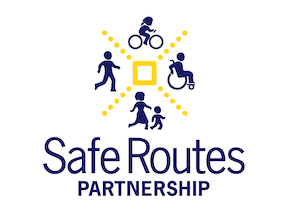This report sets out 10 principles that can be used to approach building healthy communities. The principles in the report will help people live longer, more productive lives, reduce unhealthy lifestyles, help improve a community’s competitive advantages, and allow developers, investors, local governments, and citizens to prosper.
This easy-to-read special report, released in 2013, is a roadmap for parents, educators, school administrators, and school volunteers to create healthier school environments so the children in their lives are better positioned to learn.
The National Highway Traffic Safety Administration (NHTSA) has developed videos and training resources on bicyle and pedestrian safety for law enforcement.
In 2010 and 2011, the 20 state networks engaged more than 600 partner organizations and agencies in policy priorities based upon the following policy categories:
This report describes the strategies, partners, successes and lessons learned from the Safe Routes to School state network project in 20 states during 2010.
Part IV of the series "Steps to a Walkable Community: A Guide for Citizens, Planners, and Engineers."
This resource provides school board members with information on local wellness and physical activity resources, sample policies, case studies and fact sheets.
Steps to a Walkable Community compilesmultidisciplinary tactics that readers can assemble into customstrategies designed for their community’s circumstances.
This report describes the expert panel process that was used to identify 24 recommended strategies for obesity prevention and a suggested measurement for each strategy that communities can use to assess performance and track progress over time.
This guide is designed to help schools respond the the special nutrition concerns of low-income students in their wellness policies, including through increasing physical activity and recreational opportunities.

